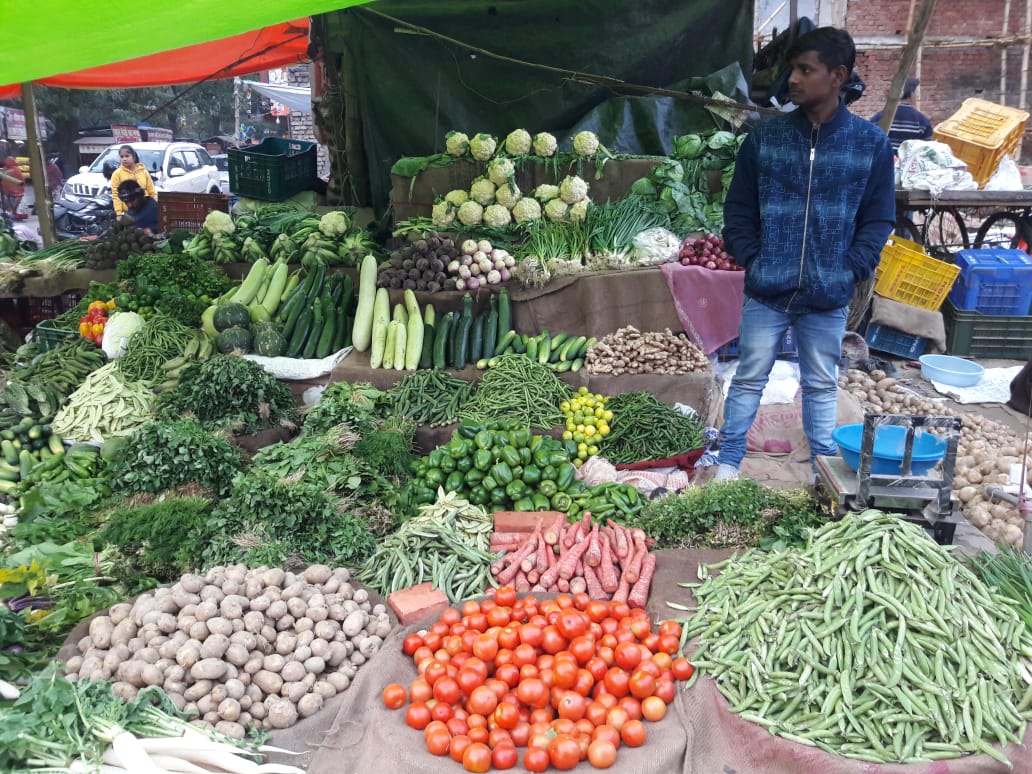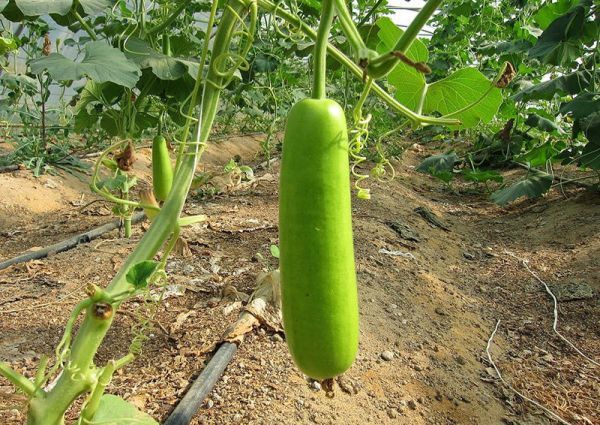There’s poison on the plate. But, should only farmers be blamed for this mess? Not really
In 2010, after samples of fruits and vegetables showed large-scale food contamination, the Delhi High Court ordered an inquiry. Public interest litigations were filed, but the matter is not resolved


The year-long wait is coming to an end. Mango, the king of fruits, is on its way to flood markets across the country. Indian summers are synonymous with varieties of mango. But, there is a health risk associated with consuming mangoes artificially ripened with calcium carbide, a chemical linked to several human health impacts, including headache, dizziness, mood disturbances, sleepiness, mental confusion, memory loss, and seizures.
A public interest litigation (PIL) on this matter is already before the Delhi High Court, which, in its recent orders, has directed the state government, the Union government, and the Food Safety and Standards Authority of India (FSSAI) to check such malpractices and fix timelines for controlling the poisoning of fruits and vegetables.
On February 5, the FSSAI informed the high court it was looking into artificial ripening of fruits with calcium carbide, the use of non-permitted wax on fruits, pesticide residue, and the presence of artificial colours on fruits and vegetables. The representative of the FSSAI also told the court “five fruit and vegetable markets [in Delhi] have been identified, including INA, Kotla, Janakpuri, Ranibagh, Ghanta Ghar for pilot projects on food safety, which will be replicated in other markets like Azadpur, Daryaganj, Ghazipur and Okhla.”
Meanwhile, the additional standing counsel for the Government of NCT of Delhi submitted in the court that “86 samples were collected, out of which 15 samples were found to be highly unsafe due to excess lead content”, further adding “under Section 272 IPC [the Indian Penal Code] food adulteration is a cognizable offence and even the police can register an FIR and take action”.
“There are enough legal provisions and Acts in the country [Prevention of Food Adulteration Act, 1955; Food Safety and Standards Regulations, 2010; Insecticides Act, 1968; and the Environment (Protection) Act, 1986] to check food contamination and adulteration. But the same are not being implemented, causing a huge health risk to the consumers,” said Akash Vashishtha, New Delhi-based lawyer and environmentalist. “Mangoes sold in the market continue to be artificially ripened using calcium carbide, a toxic chemical. Apples are coated with wax. There are other harmful contaminants in vegetables, too,” he added.

Worried about the health impacts of consuming such adulterated fruits and vegetables, two Delhi-based social workers filed a PIL (2710/2014) in the Delhi High Court in 2014. Vashishtha is representing their matter in court. Although the 2014 PIL had only one respondent — the Government of NCT of Delhi — the high court has also made the Union government a party to the matter. Meanwhile, another similar writ petition of 2010 (7495/2010) on contamination of fruits and vegetables has been clubbed with it.
In such a scenario, the entire blame-game comes on farmers, who are accused of malpractices and pressure is built to take “strong action” against them.
“Our grandfathers never used too many insecticides or pesticides in their fields. But these chemicals were introduced to them by government agencies to increase yield and make the country self-sufficient in food production,” said Ramandeep Singh Mann, an agriculture activist working closely with farmers in Punjab and Haryana. “Today, the majority of our farmers are trapped in keeping their yields high and producing ‘good looking’ fruits and vegetables to sell in wholesale mandis. I am not justifying any malpractices, but merely blaming the farmers will not solve the problem,” he added.
Last year, finance minister Nirmala Sitharaman presented her maiden Union Budget 2019 in the parliament with a roadmap to turn India into a $5-trillion economy by 2025. During her presentation, she exalted zero budget farming — “going back to basics” — which, she claimed, can double the Indian farmers’ income. “But, how are the farmers, already suffering huge crop losses due to extreme weather events, expected to adopt zero budget or natural farming? The field realities are very different,” said Mann.
Poison in food
A decade back, in 2010, New Delhi-based organisation Consumer VOICE purchased fresh seasonal vegetables (cauliflower, tomato, broccoli, ladyfinger, snake gourd, cabbage, spinach, bitter gourd, etc) from five different areas of Delhi (near wholesale mandis) and few other metro cities (Kolkata, Bengaluru and a popular retail chain of fresh fruits and vegetables).
The purpose of this study, titled ‘Vegetables, India’s poisoned staple’, was threefold. First, to find the range and number of pesticides used in vegetable fields. Second, the level of pesticides beyond the legally permitted maximum residue limit, commonly known as MRL. Lastly, identify banned pesticides used in the fields that make their way into the vegetables.
It got 193 vegetable samples tested for the presence of pesticides at a NABL (National Accreditation Board for Testing and Calibration Laboratories) accredited laboratory.

The results sent shock waves. Four banned pesticides — chlordane, endrin, heptachlor, parathion-ethyl — were found in bitter gourd and spinach samples. Researchers pointed out exposure to chlordane may be associated with testicular and prostate cancer. Acute endrin poisoning in humans affects the nervous system. Heptachlor is classified as a possible human carcinogen. Exposure to parathion-ethyl is linked to headaches, convulsions, poor vision, vomiting, abdominal pain, severe diarrhea, unconsciousness, tremor, etc.
This is not all. Samples of at least 10 vegetables, including bitter gourd, bottle gourd, brinjal, ladyfinger, potato, pumpkin, snake gourd, spinach, tomato and amaranth (chaulai), had pesticides residues beyond the European Union (EU) standards. The authors of the study pointed out how the Indian standards for MRL were far laxer than the EU standards.
Consumer VOICE also got fruit samples tested for the presence of pesticides residues. Against the Indian permissible standard of 2,000 parts per billion (ppb) of endosulfan, the lab test found 5380.9 ppb (269 times above the limit) of this pesticide in cherry samples. Meanwhile, the EU standard for endosulfan is 500 ppb only. A number of other pesticides, such as captan, methyl parathion, DDT, captafol, thiacloprid were also found above the EU limits in apple, kiwi, litchi, mango, muskmelon, papaya, peach and pear.
This study of Consumer VOICE also highlighted how oxytocin injections were being widely used “for getting more milk from cattle and for getting a high yield of fruits and vegetables.”
Media widely reported this study and the Delhi High Court acted suo motto on it and issued notices to concerned authorities. Two PILs were filed on this matter, one in 2010 and another in 2014, and the matter is still being heard.
In between, as per the directions of the high court, a five member committee was set up to collect vegetable and fruit samples from markets in Delhi and get them tested. In April 2011, 31 samples of different vegetables were tested for the presence of pesticide residues. But, “no banned pesticide was detected in any of the vegetable samples tested for residues.” Another 32 samples of fruits were tested; “pesticide residues were detected in four fruit samples and none of the samples showed the presence of pesticide residues above MRL,” said the committee’s report.
According to Vashishtha, authorities seem complacent about the issue of food contamination. In an affidavit to the high court, the representative of the Department of Food Safety, the government of NCT of Delhi informed the court its food inspectors regularly tested fruits and vegetables for the presence of colour and pesticide residues. Of the 1,420 samples tested in 2014, only five samples (0.35 per cent) had pesticide residue above the tolerance level.
But there is more than what meets the eye.

Up to 44% of food samples found adulterated
Whereas the major focus of the 2010 study was Delhi, the problem of contamination of fruits and vegetables is nation-wide. Last year, Vashishtha filed a Right to Information (RTI) application with the FSSAI and sought details of food samples analyzed and their test results.
The FSSAI provided state-wise details of fruits and vegetable samples tested, their results and action taken (convictions).
In 2017-18, of the total 99,353 samples tested across the country, more than 24 per cent samples were found adulterated. In Uttar Pradesh, almost 44 per cent samples failed to meet the prescribed standards. The situation is equally worrisome in many other states (see map: Poison in food; Percentage samples found adulterated or misbranded in 2017-18)
Four years back, in 2013-14, over 72,200 samples were tested across the country, of which 13,571 (about 19 per cent) were found adulterated. That year, in Uttar Pradesh, 31.5 per cent samples were found contaminated. Similarly, in Tamil Nadu, of the 658 samples tested, almost 40 per cent (261 samples) were adulterated. In Chhattisgarh, adulterated food samples were over 38 per cent.
Interestingly, whereas the Delhi government found only 0.35 per cent tested samples adulterated in 2014 (as per the affidavit filed in the high court), the RTI reply by FSSAI showed over 10 per cent samples in Delhi violated the permissible standards in 2013-14.
The conviction rate in 2013-14, as per the RTI reply, was 6.7 per cent only.
Map: Poison in food (Percentage samples found adulterated or misbranded in 2017-18)

According to Mann, the problem of food adulteration is undoubtedly acute. “A large number of farmers visit local shops to buy insecticides. They are desperate to save their crops from pests and diseases; and buy whatever the shopkeeper assures will protect the crops. The government agencies need to work with the farmers to address the issue of pesticides residues in food and other malpractices,” he said.
Vashishtha agreed. “Many farmers do not know which pesticides are banned in the country, or what is their correct dosage. They are ill-formed and rarely trained by the government agriculture/horticulture extension agencies,” he said.
Meanwhile, the next hearing of the Delhi high court is scheduled for March 23.

